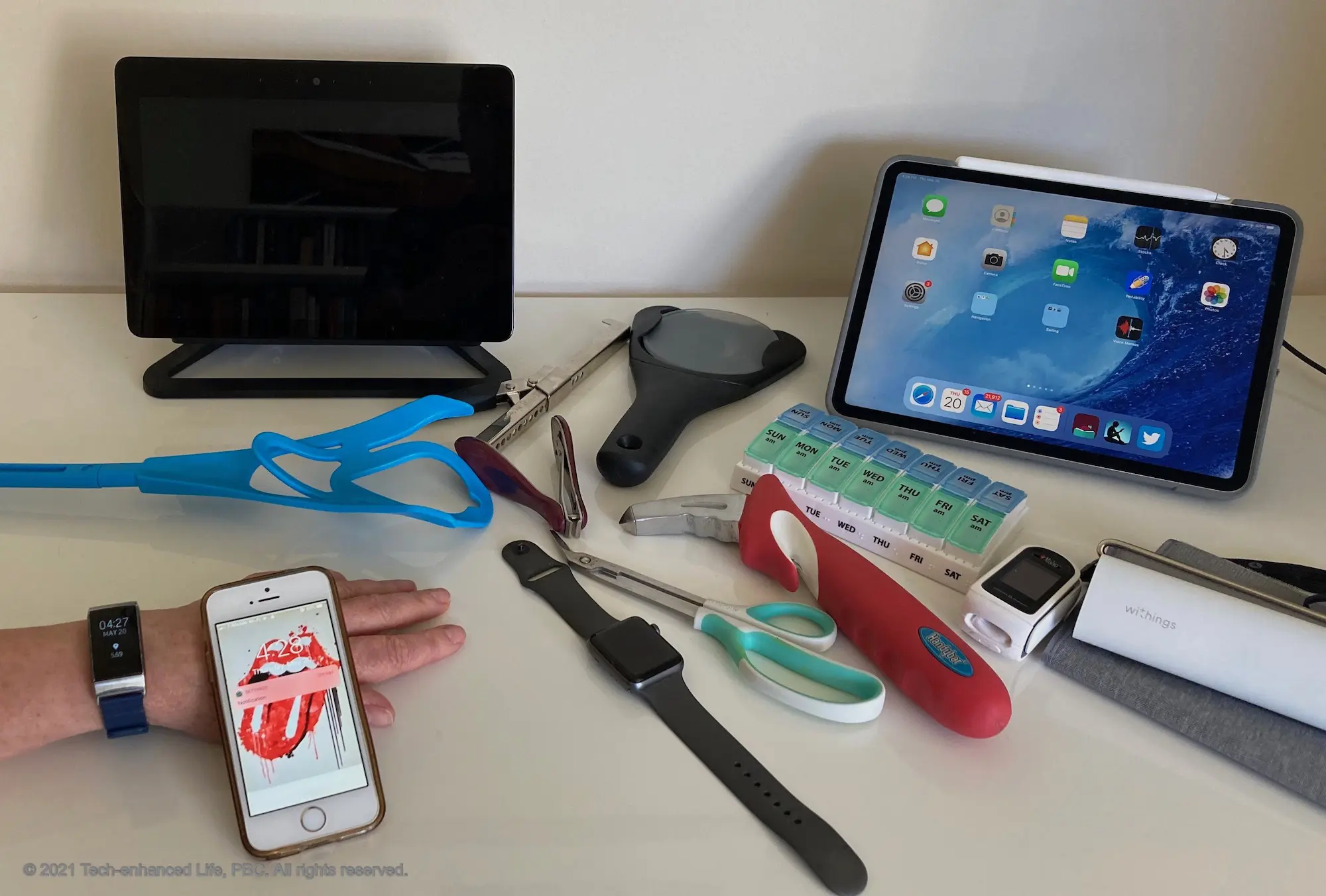America’s Aging Gadgets Are Slowing Down Productivity and Draining Economic Potential
America’s Aging Gadgets Are Slowing Down Productivity and Draining Economic Potential
By
Rachel Steinberg
Last updated:
November 24, 2025
First Published:
November 24, 2025

Consumers and Companies Are Holding Onto Devices Longer
Americans are keeping their smartphones, computers, and everyday tech far longer than they once did. A decade ago, many consumers upgraded phones roughly every two years. Today, the average smartphone lifespan in the United States has stretched to 29 months, according to Reviews.org, up from just 22 months in 2016. New flagship releases such as Apple’s iPhone 17 still lure some shoppers, but many opt to delay upgrades due to rising prices, economic uncertainty, and a shift toward sustainability.
For individuals like Heather Mitchell, a 69-year-old retiree in Tucson, keeping an older phone is largely a financial decision. Her six-year-old Samsung A71 “is still hanging in there,” and replacing it feels like a luxury rather than a necessity. This personal frugality is increasingly common across the country.
But while consumers may stretch their devices to cut costs, businesses are holding onto aging equipment even longer. This trend is especially pronounced in Europe and parts of Asia, where organizations often delay reinvestment cycles for years. On the surface, this appears efficient. In reality, outdated technology is creating a drag on output, speed, and innovation.
How Old Devices Damage Economic Growth
Recent research from the Federal Reserve highlights the deep economic consequences of deferring technology upgrades. Each additional year a company delays replacing outdated equipment reduces productivity by roughly one-third of a percent. Over time, these performance losses accumulate and contribute significantly to the widening gap between advanced economies.
The report also shows that if European nations had matched U.S. reinvestment timelines beginning in 2000, productivity shortfalls would look very different. The United Kingdom would have narrowed its gap by nearly 29 percent, France by 35 percent, and Germany by more than 100 percent. The U.S., while not perfect, reinvests in technology faster than most global competitors.
Experts say these productivity losses occur when both people and organizations try to squeeze modern workloads out of old hardware. Slower processors, aging batteries, outdated software, and low-capacity systems all compound into daily performance problems. What seems like a minor device issue becomes a large-scale economic drain when multiplied across millions of workers.
Infrastructure Strains Under Outdated Technology
Cassandra Cummings, CEO of Thomas Instrumentation in New Jersey, points out that rapid leaps in network speeds make older electronics structurally incompatible. A decade ago, 100 Mbps was considered fast. Today, gigabit-level connectivity is increasingly standard.
Hardware built for older speeds struggles to keep pace. This forces cellular and broadband networks to operate in backward-compatible modes, throttling portions of the network so outdated devices can keep up. The result is a slower experience even for users with new equipment, and higher infrastructure costs for providers trying to maintain performance.
Cummings acknowledges that frequent upgrades are expensive for households and businesses, but argues that a smarter hardware ecosystem—designed with modular components and easier repairability—could ease this cycle. Partial upgrades could extend device life without forcing consumers to buy entirely new machines.
The Refurbishment Market Could Be a Key Part of the Solution
The wear-and-tear of older devices isn’t the only issue. According to Steven Athwal, CEO of The Big Phone Store in the United Kingdom, the real problem lies in pushing old devices to handle workloads they were never built for. The result is slower operations, higher energy use, and weaker morale.
However, Athwal believes a strong refurbishment economy could transform this trend into a positive. When phones and laptops last longer, repair and resale markets thrive. Yet today much of that activity remains unregulated and largely overlooked by policymakers. Athwal argues that with better support for parts availability, software longevity, and repair infrastructure, older devices could become part of a sustainable circular economy—reducing waste while maintaining productivity.
Why Companies Struggle to Replace Old Tech
Despite the clear benefits of upgrading, many corporations lag far behind consumers in refreshing their technology. According to Jason Kornweiss, senior vice president at Diversified, large organizations often establish strict multi-year device lifecycles that become difficult to break. Even when IT teams introduce new tools, employees sometimes resist switching due to the hassle of learning unfamiliar software or features.
Diversified’s research reflects how deeply this impacts workplaces. Twenty-four percent of employees report working late due to outdated technology, and nearly 90 percent say inadequate devices limit their ability to innovate. Kornweiss does not expect these numbers to have improved.
The consequences accumulate silently. Tasks take longer, systems freeze, multitasking becomes difficult, and creative problem-solving slows. Time is the most valuable asset employees have, and aging tech consumes far too much of it.
Potential Paths Forward
Experts point to several ways organizations can reduce the productivity drain:
• Leasing devices instead of purchasing them outright
• Expanding bring-your-own-device policies, allowing employees to use personal tech
• Supporting repair-first ecosystems to reduce the cost of staying updated
• Encouraging modular hardware design
• Expanding software support windows
Yet even with better solutions, both consumers and businesses are likely to continue stretching their devices as long as economic uncertainty remains high. In the meantime, individuals like Heather Mitchell who have held onto only five phones in 26 years reflect a growing trend. Americans may be saving money, but at a nationwide scale, the cost of aging tech is quietly eroding economic output, efficiency, and innovation.
As technology continues to accelerate, the divide between what devices can do and what people demand of them will only grow—making the conversation around upgrades, repairs, and sustainability more important than ever.
Popular articles
Subscribe to unlock premium content
Why Madagascar’s Baobab Forests Are Becoming Exclusive Eco-Luxury Retreat Destinations

How Faroe Islands’ Remote Seafood Festivals Are Driving High-End Culinary Tourism

The Market for Renting Private Libraries Where Only Rare, Unpublished Manuscripts Exist

Why Madagascar’s Baobab Forests Are Becoming Exclusive Eco-Luxury Retreat Destinations

How Faroe Islands’ Remote Seafood Festivals Are Driving High-End Culinary Tourism

Why Madagascar’s Baobab Forests Are Becoming Exclusive Eco-Luxury Retreat Destinations







.png)

